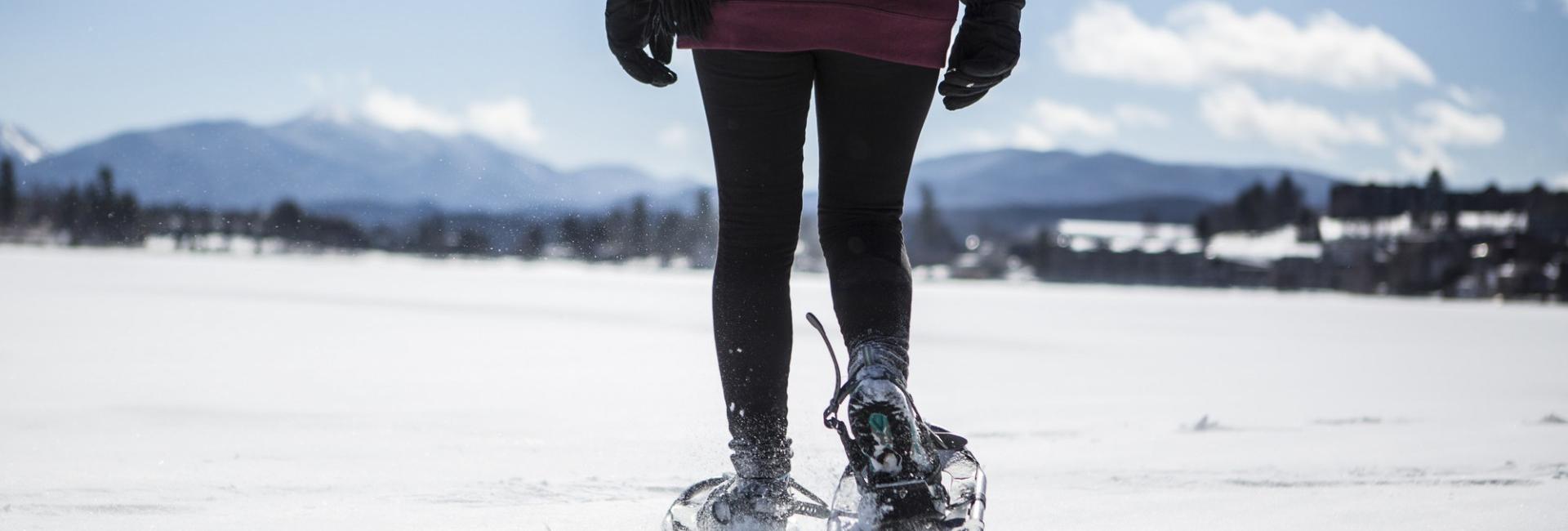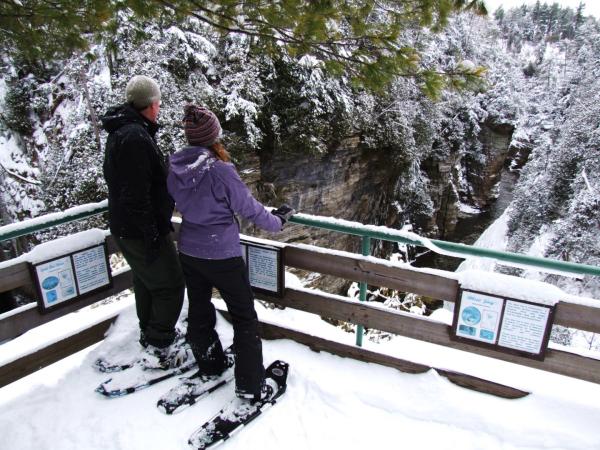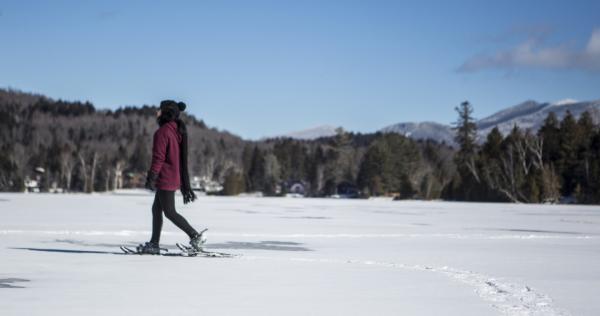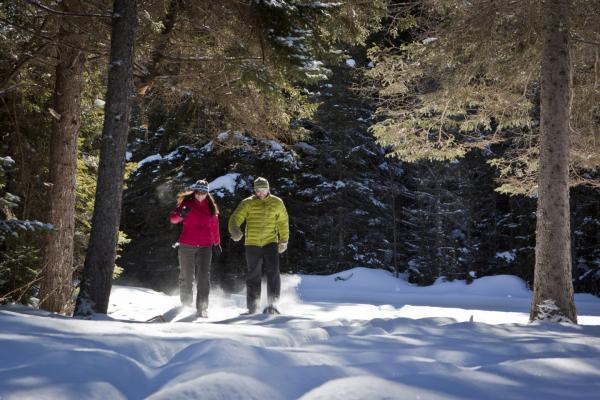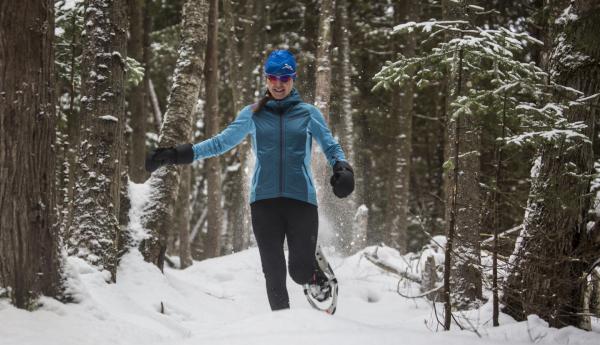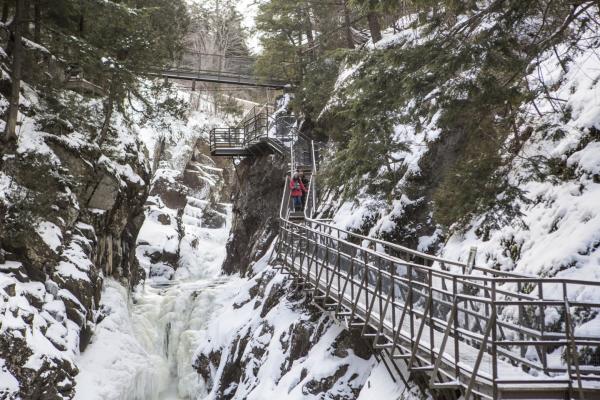Float over bottomless drifts as you explore frozen wilderness.
Native Americans made the first snowshoe tracks in the Adirondacks. Made of hardwood timber arced into oblong teardrops and rawhide laces for platforms and bindings, the design spread weight evenly across the snow’s surface, allowing them to float over snow rather than punch thigh-deep postholes with each step.
Much later, French Canadian fur trappers adopted snowshoes, which they called “raquettes” due to the racket-like shape. By the late 1800s, snowshoes were essential gear for foresters, guides, and any winter adventurer in the Adirondacks, as well as the inspiration for naming local lakes, towns, and rivers (that’s right – Raquette Lake is named after snowshoes!).
Modern snowshoes fashioned from lightweight metal and durable plastic make outdoor recreation accessible year-round. “The simplicity factor in design and use makes it a fun, easy sport to get out and enjoy,” says Carl Heilman, a renowned photographer with more than 40 years of snowshoe experience.
Visit local outfitters to rent snowshoes, telescoping poles, and even winter boots. Bringing your own footwear? “I recommend high top, waterproof boots with light insulation,” says Zander Connor, who guides snowshoe trips with Lake Placid’s High Peaks Mountain Adventures.
After you’ve equipped yourself with gear, use this guide to find your own Adirondack snowshoe adventure.

